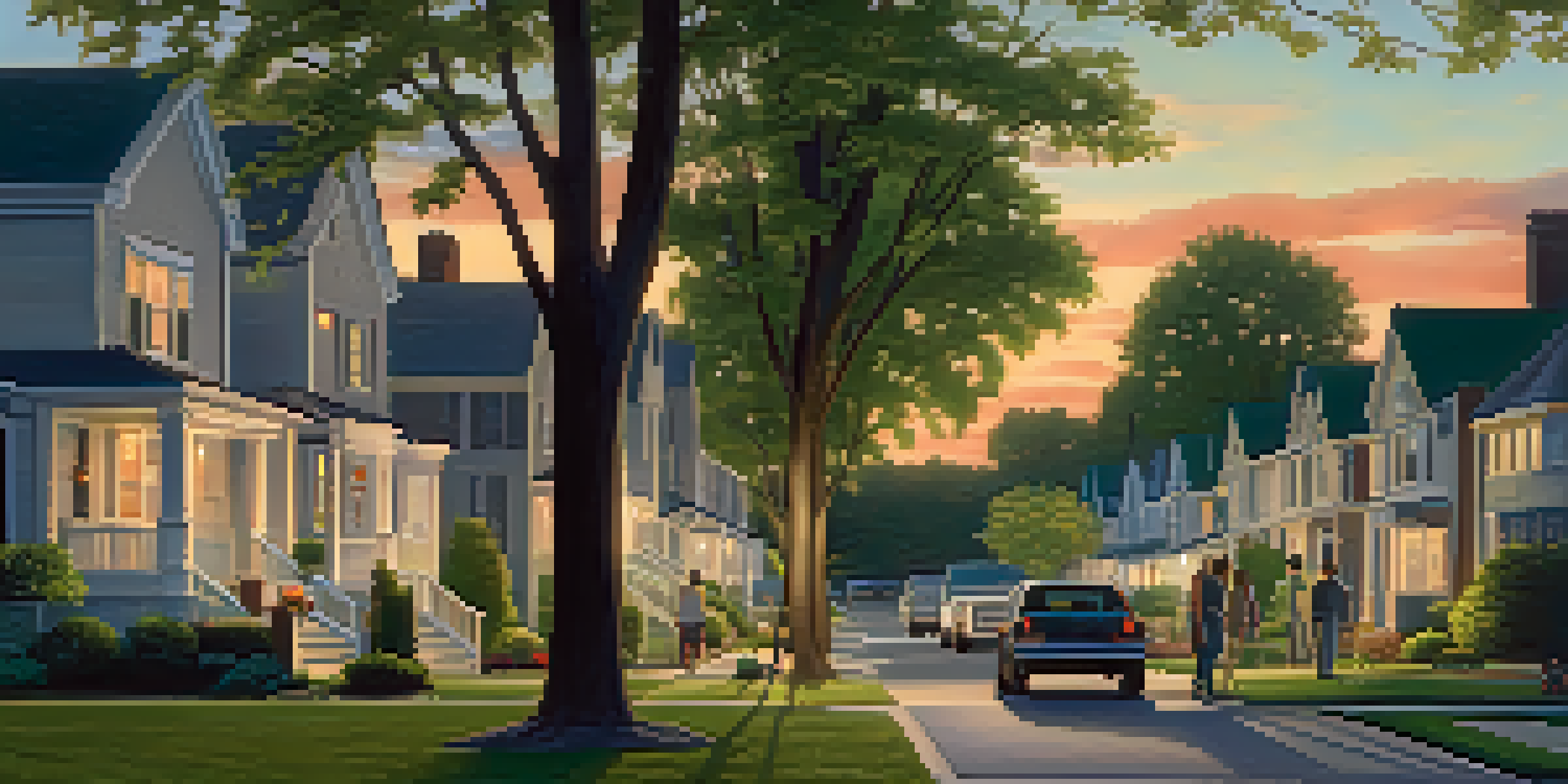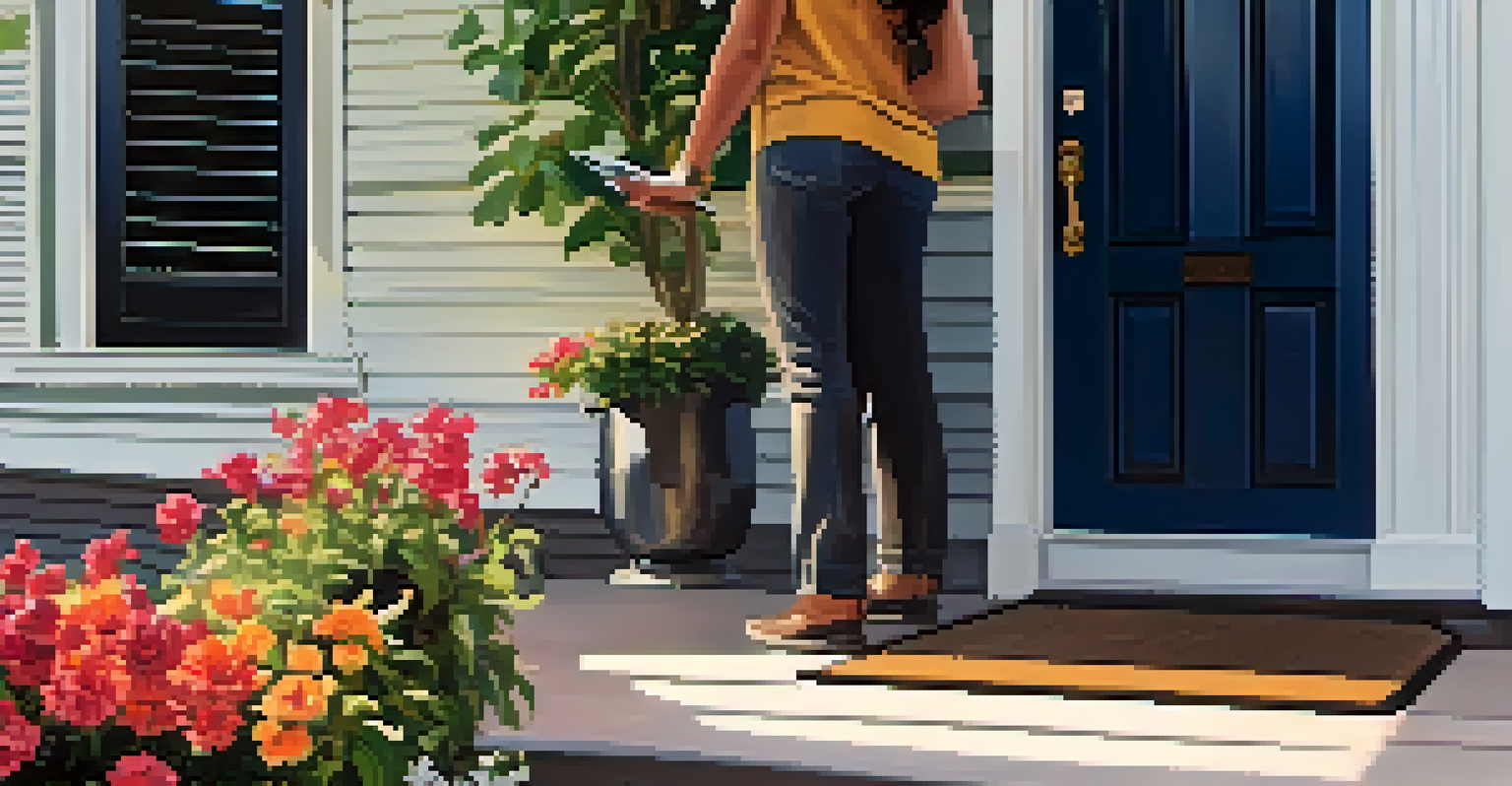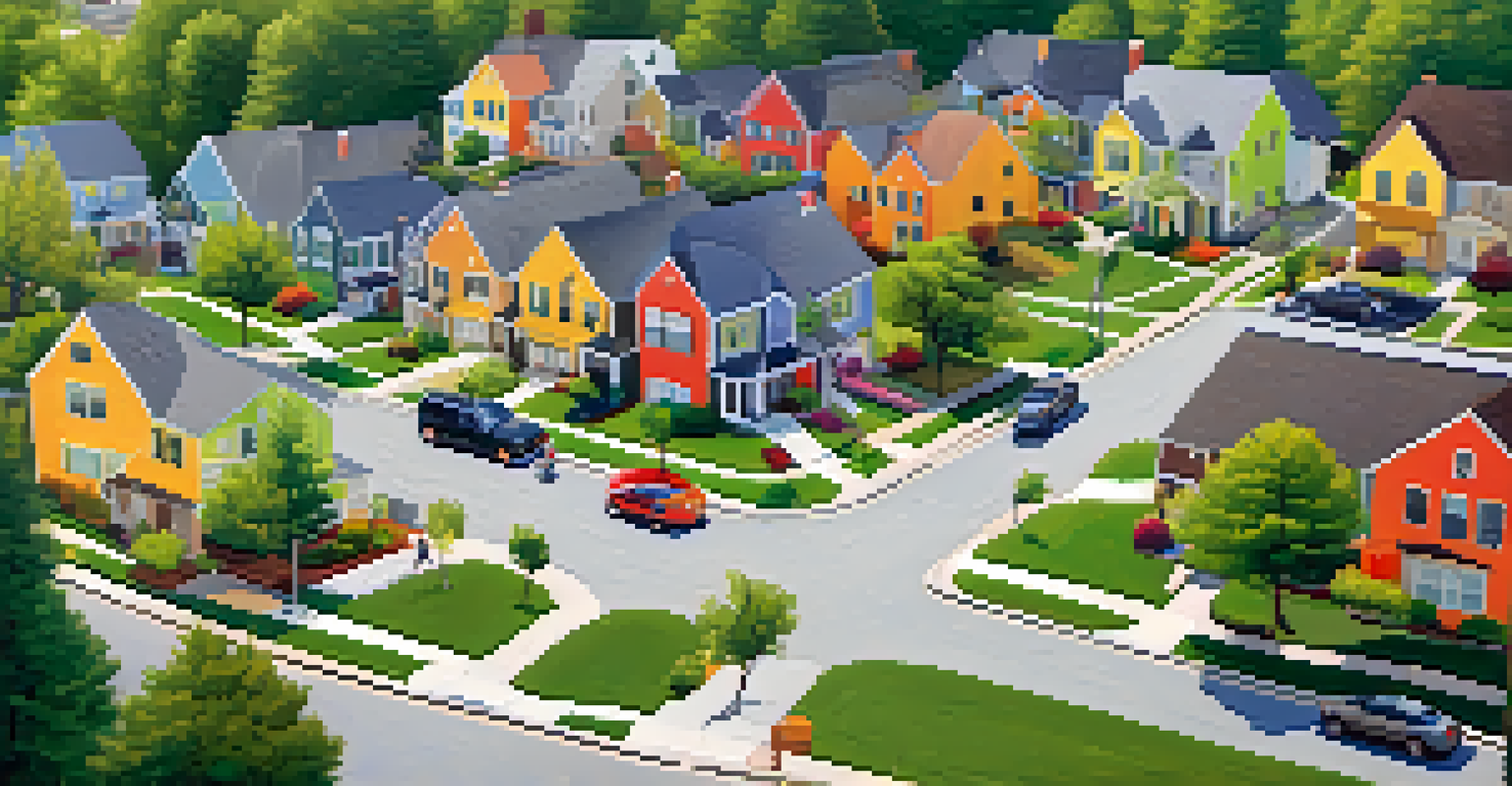The Impact of HOAs on Neighborhood Safety and Security

Understanding the Role of HOAs in Communities
Homeowners Associations (HOAs) serve as governing bodies for residential communities. They establish rules and regulations to maintain property values and foster a sense of community. By creating a structured environment, HOAs can contribute to the overall safety and security of neighborhoods.
The strength of the team is each individual member. The strength of each member is the team.
For many residents, HOAs offer a sense of belonging and responsibility. This collective ownership often motivates homeowners to care for their surroundings, leading to better-maintained properties and common areas. As a result, neighborhoods with active HOAs tend to showcase pride in their community, which can deter crime and vandalism.
In essence, HOAs act as a glue that binds residents together, creating a network of vigilance. When neighbors know each other and collaborate, they are more likely to look out for one another, enhancing the overall safety of the community.
Enforcement of Rules and Regulations
One of the primary functions of an HOA is to enforce community rules. These regulations often include guidelines on property maintenance, noise levels, and even security measures. By establishing clear expectations, HOAs help maintain a peaceful and secure environment for all residents.

For example, many HOAs require homeowners to keep their yards tidy and their homes in good repair. This not only enhances the aesthetic appeal of the neighborhood but also discourages criminal activity, as well-kept homes attract less undesirable attention. When properties are well-maintained, they signal to potential criminals that the area is cared for and monitored.
Moreover, HOAs can implement specific security measures, such as neighborhood watch programs or the installation of surveillance cameras in common areas. These initiatives further reinforce the commitment of the community towards safety and can lead to a more secure living environment.
Community Engagement and Communication
Effective communication is vital for any community's safety, and HOAs often facilitate this. Regular meetings and newsletters allow residents to stay informed about neighborhood issues, security concerns, and upcoming events. This open dialogue fosters a culture of trust and collaboration among neighbors.
Community is much more than belonging to something; it’s about doing something together that makes belonging matter.
When residents feel comfortable sharing concerns, they can collectively address issues that may impact safety. For instance, if a string of break-ins occurs, the HOA can quickly mobilize resources to enhance neighborhood security measures. Keeping everyone in the loop ensures that no one feels isolated or helpless when facing security challenges.
Additionally, engaging residents in social activities can strengthen community bonds. The more connected neighbors are, the more likely they are to watch out for one another. Strong relationships can serve as a natural deterrent to criminal activity, as potential wrongdoers may think twice when they know residents are vigilant and engaged.
Preventative Measures for Crime Reduction
Many HOAs take proactive steps to enhance neighborhood safety through crime prevention initiatives. These might include community patrols, neighborhood watch programs, or partnerships with local law enforcement. Such measures empower residents to take an active role in ensuring their safety.
By organizing patrols or watch groups, residents can deter potential criminals simply by being present in the community. Research shows that neighborhoods with active watch groups tend to experience lower crime rates, as the visibility of engaged citizens can discourage wrongdoing.
Furthermore, HOAs often collaborate with police departments to provide safety workshops or crime prevention seminars. By educating residents on how to secure their homes and recognize suspicious behavior, HOAs equip homeowners with the tools they need to enhance their personal security.
The Role of Technology in Enhancing Security
In today's digital age, technology plays a significant role in enhancing neighborhood safety. Many HOAs are adopting modern security solutions, such as surveillance cameras, smart lighting, and neighborhood apps. These tools create a digital environment where residents can report concerns swiftly and stay informed about local safety issues.
For example, some communities utilize apps that allow residents to share real-time updates about suspicious activities. This instant communication helps residents remain alert and aware of their surroundings. The convenience of technology can significantly enhance the sense of security within a neighborhood.
Additionally, smart home technology enables homeowners to monitor their properties remotely. Features such as doorbell cameras and motion sensors can provide peace of mind, knowing that residents can keep an eye on their homes even when they are away. This integration of technology not only improves safety but also fosters a community of connected residents.
Challenges Faced by HOAs in Maintaining Safety
Despite their efforts, HOAs can face challenges in effectively maintaining safety and security. Limited budgets may restrict the implementation of advanced security measures or the hiring of professional security personnel. This can lead to frustration among residents who expect more comprehensive safety solutions.
Moreover, not all residents may agree on the best approach to enhancing security. Differences in opinion regarding surveillance, community rules, or the level of enforcement can create tension within the HOA. It's essential for HOA boards to navigate these discussions sensitively to ensure that all voices are heard and respected.
Ultimately, maintaining safety in a neighborhood requires a delicate balance of resources, community engagement, and open communication. HOAs must continuously adapt to the needs of their residents while remaining committed to fostering a secure living environment.
The Future of HOAs and Neighborhood Security
Looking ahead, the role of HOAs in neighborhood safety and security is likely to evolve. As communities become more diverse and technology continues to advance, HOAs will need to adapt their strategies to meet changing needs. This may involve embracing new tools and approaches to ensure residents feel safe and secure.
For instance, an increased focus on community engagement and inclusivity could lead to more comprehensive safety programs. By involving all residents in decision-making processes, HOAs can foster a sense of ownership over neighborhood safety, making it a shared responsibility.

Ultimately, as HOAs navigate these changes, their commitment to enhancing safety and security will remain a cornerstone of their mission. A proactive approach combined with resident involvement will help ensure that communities thrive as safe, welcoming places to live.